John: "Are you thinking what I'm thinking?"
David: "That if Franz Kafka was here, his head would explode?"
John: "Actually, yeah."
Chance, as anyone with even a passing interest in chaos theory will be aware, plays a crucial role in all aspects of our daily lives. Every action we take has a potentially infinite number of outcomes and knock-on effects. Which path we follow in our version of reality can be shaped by the most seemingly inconsequential actions, a strand of quantum physics formalised by Edward Lorenz's now famous Butterfly Effect. Chance certainly played its hand in how the internet story-turned-novel by David Wong (real name Jason Pargin) became the basis for the latest film from cult horror director Don Coscarelli. It was recommended to him not by a friend, but by that computerised system at Amazon that suggests other books that you might like to consider based on your recent purchases. Intrigued by the title (seriously, who wouldn't be?), Coscarelli bought the book and immediately became convinced that it could be the basis for an interesting film.
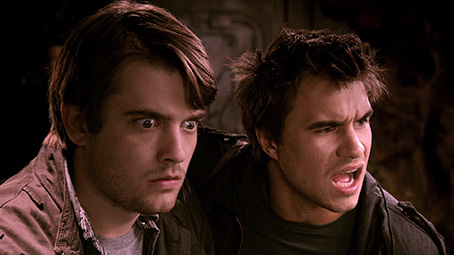
Taking its cue almost word-for-word from the novel, the film opens with a fascinating riddle, one that in the age of transplants and animal cloning raises troubling questions about the nature of identity. It's then that we're introduced to David Wong, who by then has already been affected by experiences that in narrative terms have yet to unfold. He wakes from a daze and finds himself sitting in a restaurant across from journalist Arnie Blondestone, whom he has arranged to meet to tell his extraordinary story. And it's quite a tale, one Arnie is not predisposed to believe. But then again, would you? Consider for a moment what happened to David the previous evening. As a pair with an underground reputation for investigating odd events, he and his best friend John come to the aid of a girl whose boyfriend had recently returned from the dead, or so she claims. The boys are in her basement before they realise that they are each seeing different versions of this girl, which is precisely the moment she explodes into snakes, which slither into the freezer and transform into a monster built of frozen meat cuts. The creature mistakes them for TV mystic Dr. Albert Marconi, whom the pair agree to put the creature in touch with if it lets them go. They put a call into Marconi, then hand the phone to this towering montage of sausage, chicken and pork. "So we meet again Marconi," barks the monster into the phone and instantly explodes. It's no real surprise that Arnie is having trouble swallowing this tale, but David gets his attention by describing in scarily precise detail the coins he has in his pocket and outlining the disturbing dream that he had the previous night. How could he know this? Ah, well, that's what he is here to explain.
We then flash back to an open-air party at which John's post-punk band Three Arm Sally is playing a gig. After nearly being hit by a thrown prosthetic hand belonging to the cute but cheerless Amy, David meets a cod-Jamaican mystic named Robert Marley ("Of course," says David cynically on being told this by John), who pulls the same sort of dream-reading trick on David that he later pulls on Arnie. When Robert offers to tell him some things about his future, David decides that he's had enough. As he walks away, the predictive offers become increasingly ominous. "You want to know when the first nuclear bomb will hit American soil?" he asks with an air of foreboding. "Or in which city?"
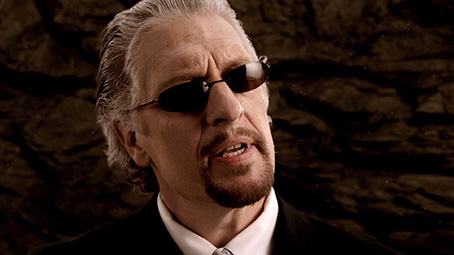
Later that night David is woken by an urgent phone call from a panic-stricken John, who urges him to make his way to his apartment as fast as he can. When he arrives, a frantic and half-naked John curses him for coming and keeps pointing to something we get a glimpse of but that David never sees. Collecting John's things, which include a handgun and a syringe of black liquid that he rightly assumes that John has injected, David tries to drive John to hospital but John is having none of it. Instead they stop for coffee, where John tells his friend about the awareness-expanding drug that is buzzing through his system, which Robert Marley has dubbed 'Soy Sauce'. Midway through this conversation David gets a call from John – the very same John sitting directly opposite him – urgently telling him not to come to his apartment after all. But it's after David accidentally stabs himself with the syringe of Soy Sauce that things really get weird...
There are, it has to be said, a few commentators who have been pompously dismissive of John Dies at the End as a drug-inspired experience that can only be appreciated by the chemically affected, throwing terms like pot-head and stoner around in that haughtily disapproving manner employed by people who've never had a decent trip in their lives. Personally I'll take a good mindfuck movie over a linear narrative any day of the week. That's not intended as a curt dismissal of narrative cinema, which I adore when done well, but there are millions of narrative films out there and precious few even half-decent cinematic mindfucks and fewer still great ones, and John Dies at the End is certainly that.
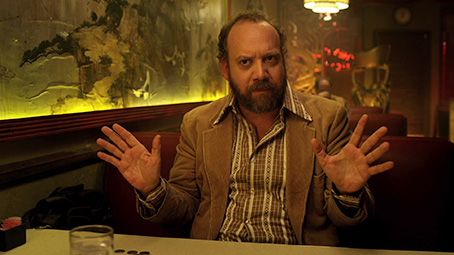
Or is it? Coming to the film as someone already familiar with the book, I had a clear idea from an early stage what was happening to our intrepid heroes. But it struck me that some of the information bones thrown by the book to clarify what was going on were absent here, and that Coscarelli seemed to be leaving it to the audience to provide their own interpretation. Yet three viewings in it became patently clear that he'd done no such thing and that everything you need to unravel the mystery is right up there on screen. That the film doesn't spell it all out for the dumbest member of a frat house audience is to be applauded, though even Coscarelli suggests that you'll probably need two or three viewings to pick up on all the clues and make the necessary connections. I'd still suggest, however, that this can be done on the first viewing alone; you just have to pay attention, not just to what's happening but to what is being said. Casual and even comical exchanges between characters are peppered with snippets of useful information, and there are a number of revealing touchstones here, from indirectly referenced works of film and literature, to the science fiction concept of nonlinear time and the many-worlds interpretation of quantum mechanics. The effects of Soy Sauce are also far from abstract in origin, being rooted in the concept that hallucinogenic drugs (LSD being the 60s trailblazer) actually expand the user's perception and enable them to see things that are invisible to the everyday eye. Wong and Coscarelli take this a stage further with the suggestion that Soy Sauce not only super-heightens the senses, but fragments linear time and opens up doorways to other dimensions.
Adding to this potent mix are the tricks that have been played on just about all of us by our peripheral vision at one time or another, when we think we've seen something at the corner of the eye and have reacted with alarm, only to find that we've caught a glimpse of an oddly coloured lampshade or the fast-moving shadow of a passing car. This genetic survival instinct dates back to our hunter-gatherer days, when that briefly glimpsed and indistinct blur of moving colour could well be the predator that might be our undoing. What Wong and Coscarelli propose is that the instinct itself is as keen as it ever was and that only its nature has changed, providing us with a way of being able to see things that remains stubbornly undetectable when sitting in what we'd normally describe as plain sight. Unless, of course, you've had a dose of Soy Sauce which, like the sunglasses that enable the human protagonists of They Live to see the true nature of the alien society that has subverted theirs, lifts the veil that allows these inter-dimensional creatures to move freely and undetected within our world. And Soy Sauce isn't a product of some chemical laboratory, but a sentient life form whose purpose is to seek out appropriate hosts and enable them to locate and cross through dimensional portals. When David sees the liquid move and sprout spikes after taking an accidental hit he's not hallucinating, but seeing the substance as it really is. As John reveals at one point: "You don't choose the Soy Sauce, the Soy Sauce chooses you."
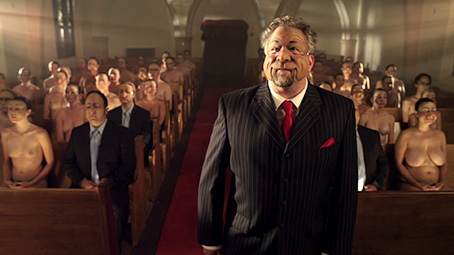
But the book and film's cult following comes less from the nature of these complex elements than the fun Wong and Coscarelli are prepared to have with them. Thus while the concept of non-linear time is inferred in John's proclamation that he's remembering things that haven't happened yet, it's more clearly and amusingly referenced in a moment of exquisitely played humour after John wakes from a death trance in the back of a truck in which he and his friends are being forcibly transported:
John: "Are we going toward the Mall of the Dead, or coming back from it?"
David: "We're heading there."
John: "Right! Because Fred's still alive..."
Fred: (aghast) "What?"
Charging two directionless slackers like David and John with the task of saving the universe is in the same ball park as asking The Big Lebowski's The Dude to solve a high stakes kidnapping case, and the results are often as funny. Mismatched in that way that best friends so often are, David and John strike you – like Bill and Ted before them – as the least logical but somehow most appropriate boys for the job. That the pair are so instantly likeable and bounce so well off each other is down in no small part to Coscarelli's sharp eye for burgeoning talent, with first-timer Chase Williamson's hilariously deadpan incredulity as David neatly complimented by Rob Mayes' twitchy energy and broad cocksure grin as John. Equal care has been taken with a fine supporting cast, with even the smaller roles written and performed in a manner that is designed to really register, notably cult favourite Clancy Brown as the authoritative Dr. Marconi and the wonderful Doug Jones as creepy inter-dimensional traveller Roger North. And as well as helping to co-fund the project through his delightfully named production company Touchy Feely Films, Paul Giamatti is clearly having a ball as reporter Arnie Blondestone, a role he took primarily because he'd always wanted to do a full blooded "What the hell was that?" reaction shot – how appropriate, then, that the one he delivers here is possibly the best I've ever seen. And as Phantasm devotees should have no trouble spotting, that's Coscarelli favourite Angus Scrimm as the splendidly named Father Shellnut.
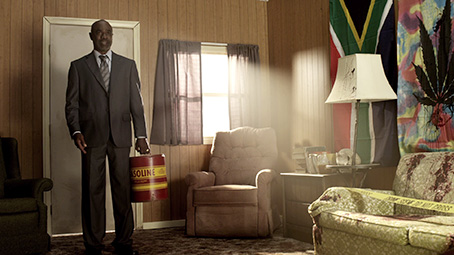
For those who know the novel there are very specific pleasures, in both the astonishing accuracy with which favourite scenes have been recreated (or in the case of the opening riddle, visually enhanced) and the efficiency and invention with which whole sequences have been compressed and characters combined while staying faithful to the spirit of the written text. The consistently brisk pace may have been partly dictated by the need to cram so much of such an incident-busy novel into a seemingly impossible 99 minutes of screen time, but it serves the material well and never feels overly hurried. And the seductive blend of mechanical animatronics and convincing CG wizardry allows Coscarelli to convincingly realise some of the book's wilder elements but retain that old school charm that helped make Bubba Ho-Tep such a genre fan favourite. The result really is everything great, low-budget cult cinema should be – smart, inventive, risk-taking, witty, delightfully cast and deliciously directed, and more unbridled fun than any other film that I saw last year.
Whatever your views may be about the ongoing gradual move from film to digital as the recording medium of choice, it does allow directors working on limited budgets to produce material that looks as good as its more expensive counterparts and provide near-pristine materials for disc producers to work with. John Dies at the End was shot on the Red One 4K camera and supplemented by that favourite indie filmmaker's friend, the Canon 5D DSLR, on which close-up effects that I'd have sworn were created in post were shot without enhancement. And the image as a whole looks terrific here, boasting a fine level of detail, a strong contrast range with deep black levels and no obvious evidence of digital enhancement (you really shouldn't need it with Red One footage). There is, unsurprisingly, a fair amount of post-production colour tweaking, but the daylight exteriors are largely naturalistic and the stronger tints are achieved without compression issues or banding. The framing is the HD standard of 1.78:1.
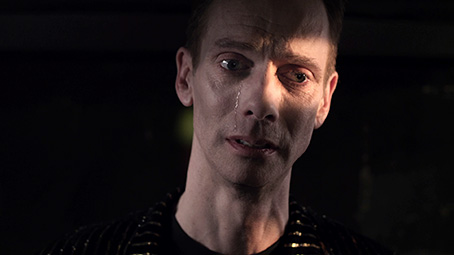
The DTS-HD Master Audio 5.1 soundtrack is similarly impressive, a super-clear mix with an excellent dynamic range and a solid bass response that really kicks when required (anything involving monsters or explosions usually delivers). The surround work is often subtle but springs to life with the voice of Korrok, which booms around the room with imposing authority.
Optional English SDH subtitles are included.
Commentary with Cast & Crew
Writer-director Coscarelli, producer Brad Baruh and actors Chase Williamson and Rob Mayes provide one of the liveliest and most enjoyable commentary tracks I've heard in a long while. Often screen specific, a vast amount of ground is entertainingly covered here: the opening titles; the difficulty of casting key roles and the contributions of individual actors; the low-tech effects; the procuring of key locations through adverts in Craigslist; the use of CG; the animated sequence by David Hartman (I forgot to mention that); Angus Scrimm's reluctance to say the word "fuck"; the work or cinematographer Michael Gioulakis, composer Michael Gioulakis and other contributors; and a whole lot more. Coscarelli's admiration for the source novel is clear, and Rob Mayes provides an intriguing take on John by revealing that he played him as a possible figment of David's imagination. Terrific stuff.
Trailer (2:26)
The same deliciously seductive teaser trailer that had me on tenterhooks in anticipation for the seemingly endless time it took for the film to make it to the UK.
Deleted Scenes (9:38)
A welcome sprinkling of deleted sequences, including a bit more of the fabulous Roger North, an alternative ending that cuts out just as Marconi is about reveal something important, and a scene in the back of the truck that is so close to how it was described in the novel that I was able to quote the dialogue ahead of the actors. Don't you just hate it when people do that?
Getting Sauced (6:45)
The film's electronic press kit is the usual mixture of interview sound bites, upbeat comments about the production and clips from the trailer. An OK starting point for newcomers.
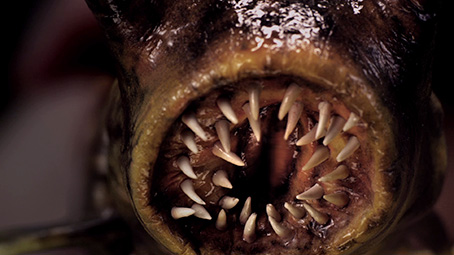
Creature Corps (8:34)
Coscarelli's regular effects producer Robert Kutzman is our guide for a brief but engaging look behind the scenes at the creation of some of the film's physical effects. The finished bomb used in the climactic scene is a nice piece of engineering (the timer works too), and we also get to see the test footage made of the creature in John's apartment and one of the crew suiting up in the meat monster costume. As so often with such featurettes, it does bring home the fact that the rest of us are probably in the wrong job.
Casting Sessions (7:13)
When I recently interviewed Coscarelli and asked him about the casting of Chase Williamson, he spoke enthusiastically about the audition in which the actor absolutely landed the part by nailing the voice-over (a recollection that's also on the commentary track), and the evidence is right here. His reading is accompanied by Fabianne Therese demonstrating she is ready to go as Amy, and Chase Williamson and Rob Mayes in confident full flow playing the meat monster sequence.
Interview with Paul Giamatti (9:50)
In a review conducted for Fangoria, the thoroughly likeable Giamatti talks enthusiastically about his role in the film both as Arnie and one of the film's executive producers (via his production company Touchy Feely Films), his fondness for old school physical effects, and working with Chase Williamson and Don Coscarelli, a director he rates alongside the likes of Spielberg and Tim Burton. A compact and enjoyable piece.
John Dies at the End is not going to work for everyone and I have no problem with that, unless of course you start trying to tell me I'm wrong for loving it to bits, then you can kiss my disinterested rectum. By its very nature, cult cinema is always going to provoke a passionate response in the audience that embraces it, and embrace it I did, willingly and wholeheartedly. I'm not sure I can wait another ten years for the next Don Coscarelli film, so will someone please, please give him the money he needs to make his next movie now. Once again Eureka has delivered the goods when it comes to the Blu-ray, with a spot-on transfer and some first class extras. Highly recommended to those who are game.
|